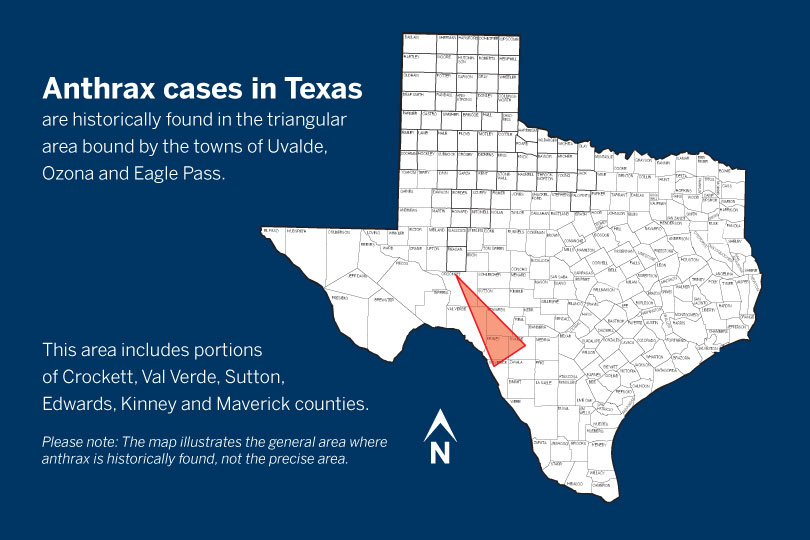The first anthrax case of the year was confirmed in one captive antelope on a premises in Uvalde County on June 19.
“The premises is located within the triangular area of Texas where anthrax is historically found in the soil,” Dr. Susan Rollo, state epidemiologist, said. “There is an effective anthrax vaccine available for use in susceptible livestock in high risk areas. We encourage you to consult with your local veterinary practitioner.”
The premises has been placed under quarantine, and the premises will not be released from quarantine until the animals on the premises have been vaccinated and the affected carcasses are properly disposed of as outlined in the Texas Animal Health Commission’s (TAHC) rules.
Anthrax is a bacterial disease caused by Bacillus anthracis, which is a naturally occurring organism with worldwide distribution, including certain parts of Texas.
The bacteria can surface, contaminating soil and grass after periods of wet, cool weather, followed by hot, dry conditions. During these conditions, animals ingest the anthrax bacteria when they consume contaminated grass and hay or by inhaling the spores. Outbreaks will usually end when cooler weather arrives.
Acute fever followed by rapid death with bleeding from body openings are common signs of anthrax in livestock. Carcasses may also appear bloated and decompose quickly. Livestock or animals displaying symptoms consistent with anthrax should be reported to a private veterinary practitioner or a TAHC official.
Farmers and ranchers are encouraged to follow basic sanitation precautions when handling affected livestock or carcasses. It is recommended to wear protective gloves, long sleeve shirts and to wash thoroughly afterward to prevent accidental spread of the bacteria to people.
For more information about anthrax, visit www.tahc.texas.gov/news/brochures/TAHCBrochure_Anthrax.pdf, or contact your local TAHC region office.

